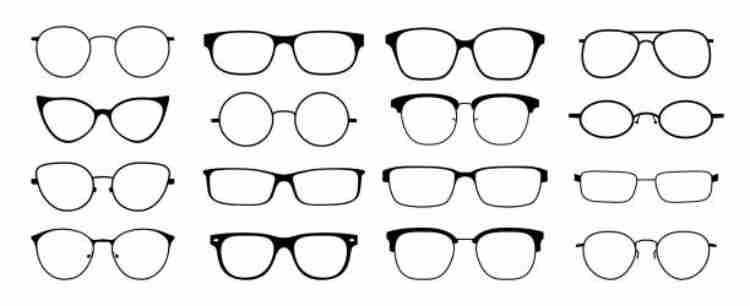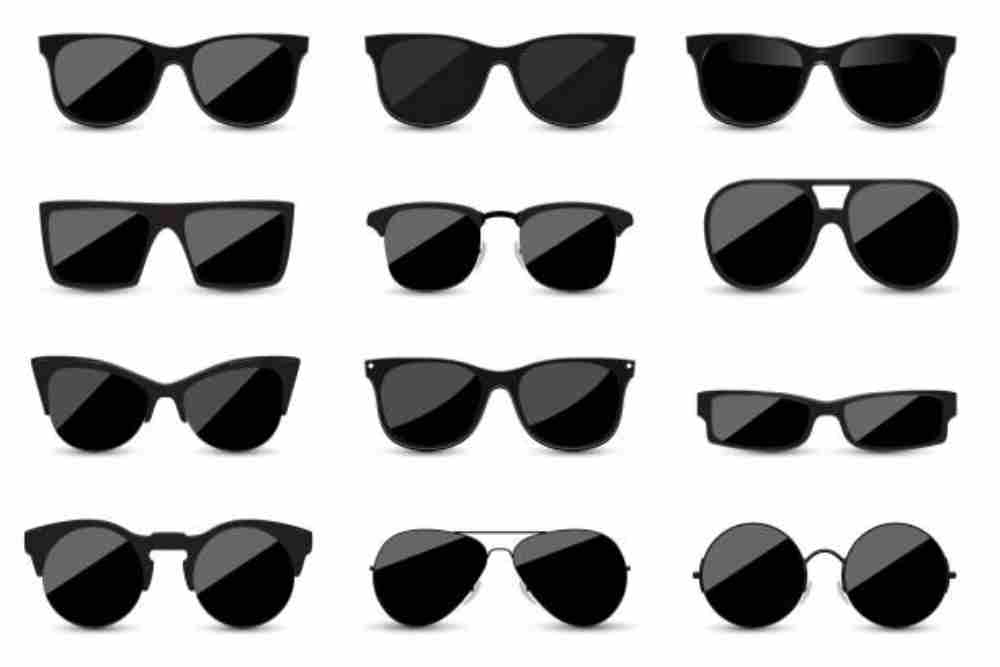Table of Contents
What is Glare & How It Can Hurt Your Vision
Light is essential for imaginative and prescient. Glares bounce off items and enters your eyes, letting you see. But now and again, it’s the supply of imaginative and prescient troubles, like glare.
The difficulty of glare is something most people address on a day-by-day basis. From driving down a rainy highway overdue at night to attempt to look at your preferred baseball group without squinting, glare’s effects can grow to be an ugly and once in a while risky experience. On top of that, if you’re a spyglass wearer, the consequences of glare may be even worse as they often come to be smudged or scratched. Regular eye tests from your eye care expert can diagnose vision conditions that can heighten the effects of glare or provide answers to glow – including anti-reflective eyeglass coatings or Transitions® adaptive lenses.
What is glare?
Glare is the absence of visual performance or pain produced via a mild depth in the visible view more than the intensity of light to which the eyes are adapted. Positioned, glare happens when too much mild enters your eye and interferes with your eye’s capacity to manipulate it. Glare may be distracting and dangerous and occur day or night in some approaches. Glare may also come without delay from a mild source or be meditated. There are four kinds of glare: Distracting glare, discomforting glare, disabling glare, and blinding glare.
Distracting glare
Distracting glare results from mild reflection whilst moving from one optical medium to some other (e., G. From air to glass). This outcome in a number of the calm being contemplated off the surface or internally reflecting inside a spectacle lens. Distracting glare comes from gentle meditation off the front of lenses so that others can’t see your eyes, and from light pondered off the backs of or in the lenses so that you see reflections to your lenses. This glare can also be skilled at night, forming “halos” around headlights or streetlights. Distracting glare can annoy or distract the viewer and lead to eye fatigue.
Discomforting glare
Discomforting glare may also result from the direct or contemplated glare caused by normal, vivid daylight conditions. Glare happens in varying ranges of depth. However, even the milder stages of discomforting glare result in visual pain, often proven by using signs and symptoms of eyestrain or fatigue. Depending upon one’s mild sensitivity, this glare can also be discomforting no matter climate or time of day. The unprotected eye will answer to discomforting glare via squinting and constriction of the pupil. It is typical for the affected individual to attempt to avoid the glare by protecting the eyes or turning in some other direction.
Disabling glare
Glare, also veiling glare, is more extreme than discomforting glare. The excessive degree of light produces a glow that can sincerely intervene with or block imagination and is prescient. This glare comes from excessive, intense sunlight, which can occur when facing the sun directly. It causes gadgets to have lower assessment than they might if there were no glare. glare happens due to mild scatters while it enters the eye, which, in turn, reduces the understanding of vision and raises the differential light threshold. Disabling tends to become extra complicated inside the aged, as the lowering transparency of the crystalline lens that comes with age ends in developing cataract formation.
Blinding glare
Blinding glare effects from light reflecting off smooth, bright surfaces consisting of water, sand or snow. It can be strong enough to block imagination and prescient. When the mild reflects on the characters, it becomes polarized and produces a blinding glare. Blinding glare can block creativity, and proactive to the volume the wearer turns into visually compromised.
Glare tends to worsen with older age, mild coloured eyes, earlier eye surgery, and certain eye situations, including cataracts, dry eye and macular degeneration.
What do you want to see through the eyes of someone suffering from glare?
As formerly referred to, glare may be described as “severe brightness” from the presence of immoderate seen the light, and may cause pain and compromise your vision. The Vision Simulator suggests to customers what it’s like to see through a person’s eyes tormented by glare and the variety of usual conditions wherein glare can occur. The Vision Simulator exemplifies the effects of glare from the sun. However, glare can be caused by mild synthetic sources as well.
What causes glare?
Glare is a not unusual response to vibrant light; however, it may be a signal of cataracts, macular degeneration or other eye sicknesses. Visiting an eye care expert is recommended while glare interferes with your imaginative, prescient, and best-of-acceptance. An expert eye exam is specifically critical to rule out the opportunity of cataracts, which are strongly related to glare and halo signs. Additionally, if you are a spyglass wearer, your eye care professional can provide you with lens options that can help decrease glare outcomes.
What optical solutions exist to lessen glares?
Several optical answers exist that could help combat the results of glares. One answer is an anti-reflective (AR) coating, which may be introduced for your prescription lenses and decreases reflected mild and glares. Photochromic Transitions lenses, which adapt their level of tint based totally on how plenty UV is a gift, can also assist reduce the results of glare. Transitions lenses are also well matched with AR coatings and perform even better when mixed with AR. Transitions lenses with an AR coating block distracting, discomforting and disabling glares. For extra protection in opposition to blinding or meditated glares, Transitions® Vantage® lenses with variable polarization are an excellent solution. In addition to Transitions Vantage lenses, polarized shades can do away with blinding glare or the mild off of flat surfaces like wet roads, water, ice, and snow.
The Glares Effect Test and the Impact of Age on Luminosity Thresholds
The glares effect (GE) is an apparition in which a white place seems self-luminous while surrounded by linearly lowering luminance ramps. It has been shown that the significance of the luminosity effect may be modulated by manipulating the gradients’ luminance range. In the overall look, we examined the thresholds for the GE on two agencies of adults: younger (20–30 years old) and elderly (60–seventy-five years vintage). The purpose of our attitude observes she is to test the possibility of remodelling the GE right into a test that might, without problems, measure thresholds for luminosity and discomfort glare. The Glare Effect Test (GET) consisted of one zero one published card that differed from each other for the variety of luminance ramps.
Participants have been assessed with getting and a battery of visual assessments: visible acuity, comparison sensitivity, the illusion of duration belief, and an Ishihara test. Specifically, inside the GET, participants have been required to categorize cards based on reference playing cards (stable black-no gradient; complete variety black to white gradient). PSEs of the GE display no correlation with the other visible assessments, revealing a divergent validity. A sizable difference between young and aged was observed. Contrary to our authentic expectations, luminosity thresholds of GE for the aged have been higher than those for the younger, suggesting a non-direct relationship between luminosity notion and discomfort glare.

Method
Subjects
Participants had been two corporations of adults: young (30 contributors, suggest age = 23.3, SD = 2.4, range 20–29) and elderly (20 participants, imply age = 64.Eight, SD = three.Nine, variety 60–72). All participants had no modern or preceding neurological or psychiatric disorders. This research was approved according to the recommendations outlined in the Declaration of Helsinki and was authorized by the neighbourhood ethical committee.
Stimuli
The Glare Effect Test (GET), changed into a paper, looks at easily degree perceived luminosity thresholds for the GE in a herbal placing without synthetic screens. Luminosity verges applied in this context are defined as when an opaque surface begins to seem self-luminous, i.E., sparkling (Bonato and Gilchrist, 1994, 1999; Zavagno and Caputo, 2001). GET is composed of one hundred and one plastic cards of 12 cm × 12 cm wherein reflectance ramps of the GE figure (10. Five cm × 10.5 cm) trade progressively from solid black (card zero) to full black-to-white (card a hundred and one) smooth steps.
GE cards were shaped using Adobe Illustrator and published using an Epson Stylus Photograph R2400 copier on a 167 g/m2 Epson mattes white paper. The GE does now not require the employment of perfectly linear luminance ramps: any quasi-linear luminance ramps generate a GE (Zavagno and Caputo, 2001, 2005) equally.
Previous studies (Zavagno and Caputos, 2005; Zavagno and Bressanelli, 2008) have shown that the depth of the GE in pass-like styles, similar to those employed in getting, is modulated by using the ratio between the range of luminosity ramps and the luminance of the sample’s history (See Supplementary Figure S1 for a few examples of GE cards). Glares
Other than the GET mentioned above, to relate the GE notion with other psychophysical and perceptual responsibilities, we applied the following exams: contrast sensitivity (Pelli and Robson, 1988), visual acuity with a letter logMAR chart (Goodlife Co., Elgin, IL, United States, cod. 735000) together with a crowded experimental model with 12.5% inter optotype distance compared to the unique 100%, colour notion (Ishihara colour tables), and a phantasm of length sensitivity the use of Brentano-illusions (Daini et al., 2002).
Procedure
Participants were examined on a black desk in a lab, with uniform mild (61 cd/m2), without reflections. Referring to two reference cards (GET playing cards 0 and one zero one), contributors had been required to categorize 99 GET playing cards on the premise of the brightness similarity of the relevant square of a card to both of the reference playing cards with a -opportunity compelled preference (2AFC) challenge. The two reference cards were located on the table at approximately forty cm of distance from the eyes and separated by using 30 cm.
Before the categorization challenge, contributors had been requested to record and describe the difference among the imperative squares of the two reference playing cards. Subsequently, the experimental venture has explained the usage of one random card from a deck of cards. Participants were expressed to pay attention to the relevant square and point to which one of the two reference playing cards the target appeared more comparable in phrases of brightness (Figure 1). Experimental playing cards were randomly supplied utilizing the examiner separately and positioned 10 cm above the reference cards, which had been constantly seen.
Glares
The solution for each card (99 trials) became recorded. Cards that were perceived just like reference card 0 (solid black ramps) have been assigned a score of zero, even as cards much like reference card one hundred and one (full black to white ramp) had been given a score of one. These records had been sooner or later ordered by card variety, and they have been equipped with a psychometric characteristic of the usage of generalized linear version in R (R Core Team, 2017). Glares
For every difficulty, a regression version became calculated, and a specific Point of Subjective Equivalence (PSE) changed extracted alongside the slope of the psychophysical function (Knoblauch and Maloney, 2012). In this manner, PSEs represent a score of sensitivity to the GE. They can be considered a threshold, which may vary from zero (no GE impact) to 99 (max GE effect); the regression slope, instead, represents the accuracy of this estimation.
Glares Related Terms
glare
glarer definition
glare meaning
glare definition
what is a glare
define glare
glear
glaired
meaning glare
a glare

